Plum Rain-Season-Oriented Modelling and Intervention of Indoor Humidity with and without Human Occupancy
Abstract
1. Introduction
2. Problem Formulation
2.1. Assumptions and Specifications
- (1)
- The building envelope is made of concrete blocks with thickness 0.2 m.
- (2)
- The combined thermal mass consists of the external wall and indoor air, whose temperatures are equal.
- (3)
- The indoor air is well mixed, indicating that air temperature and RH are uniform in the room.
- (4)
- The ventilation rate is a constant and described by different ACH (h−1).
- (5)
- The combined convective heat transfer coefficient between the building envelope and the outdoor air is 5W/(m2·°C) [26].
- (6)
- The initial indoor air temperature and RH equal to the average outdoor meteorological parameters during the plum rain season.
- (7)
- Mold grows only on the wooden building structures and materials.
2.2. Model Equations
2.3. Case Scenario
3. Results
3.1. Data Collection and Fitting
3.2. Indoor Air Temperature and RH Without Ventilation
3.3. The Effect of Ventilation in Unoccupied and Occupied Home
3.4. The Effect of Dehumidification in Unoccupied and Occupied Home
3.5. The Effect of Heating in Unoccupied Home
4. Discussion
5. Conclusions
Author Contributions
Funding
Acknowledgments
Conflicts of Interest
References
- He, H.; Lee, H. Yangtze floods recorded on Mt. Mufu and Swallow Cliff in Nanjing, China. Geomatics. Nat. Hazards Risk 2017, 8, 905–917. [Google Scholar] [CrossRef]
- Lotz, W.A. Moisture problems in buildings in hot humid climates. ASHRAE J. 1989, 31, 26–27. [Google Scholar]
- Dearborn, D.G.; Yike, I.; Sorenson, W.G.; Miller, M.J.; Etzel, R.A. Overview of investigations into pulmonary hemorrhage among infants in Cleveland, Ohio. Environ. Health Perspect. 1999, 107, 495–499. [Google Scholar] [CrossRef] [PubMed]
- Menetrez, M.Y.; Foarde, K.K. Emission exposure model for the transport of toxic mold. Indoor Built Environ. 2004, 13, 75–82. [Google Scholar] [CrossRef]
- Mussalorauhamaa, H.; Nikulin, M.; Koukilakähkölä, P.; Hintikka, E.L.; Malmberg, M.; Haahtela, T. Health effects of residents exposed to Stachybotrys in water-damaged houses in Finland. Indoor Built Environ. 2010, 19, 476–485. [Google Scholar] [CrossRef]
- Gutarowska, B.; Kosmowska, M.; Wiszniewska, M.; Pałczyński, C.; Walusiak-Skorupa, J. An investigation of allergenic proteins produced by moulds on building materials. Indoor Built Environ. 2012, 21, 253–263. [Google Scholar] [CrossRef]
- Mendell, M.J.; Mirer, A.G.; Cheung, K.; Tong, M.; Douwes, J. Respiratory and allergic health effects of dampness, mold, and dampness-related agents: a review of the epidemiologic evidence. Environ. Health Perspect. 2011, 119, 748. [Google Scholar] [CrossRef]
- Sharpe, R.A.; Le Cocq, K.; Nikolaou, V.; Osborne, N.J.; Thornton, C.R. Identifying risk factors for exposure to culturable allergenic moulds in energy efficient homes by using highly specific monoclonal antibodies. Environ. Res. 2016, 144, 32–42. [Google Scholar] [CrossRef]
- Viitanen, H. Improved model to predict mold growth in building materials. In Proceedings of the Thermal Performance of the Exterior Envelopes of Whole Buildings X, Clearwater Beach, FL, USA, 2–7 December 2007. [Google Scholar]
- Isaksson, T.; Thelandersson, S.; Ekstrand-Tobin, A.; Johansson, P. Critical conditions for onset of mould growth under varying climate conditions. Build. Environ. 2010, 45, 1712–1721. [Google Scholar] [CrossRef]
- Johansson, P.; Svensson, T.; Ekstrand-Tobin, A. Validation of critical moisture conditions for mould growth on building materials. Build. Environ. 2013, 62, 201–209. [Google Scholar] [CrossRef]
- Johansson, P.; Ekstrand-Tobin, A.; Svensson, T.; Bok, G. Laboratory study to determine the critical moisture level for mould growth on building materials. Int. Biodeterior. Biodegrad. 2012, 73, 23–32. [Google Scholar] [CrossRef]
- Heo, K.J.; Kim, H.B.; Lee, B.U. Concentration of environmental fungal and bacterial bioaerosols during the monsoon season. J. Aerosol Sci. 2014, 77, 31–37. [Google Scholar] [CrossRef]
- Yang, J.; Qin, M. Indoor thermal conditions in residential buildings during the plum rain season in East China. J. Civ. Archit Environ. Eng. 2015, 37, 40–46. [Google Scholar]
- Viitanen, H.; Vinha, J.; Salminen, K.; Ojanen, T.; Peuhkuri, R.; Paajanen, L.; Lähdesmäki, K. Moisture and bio-deterioration risk of building materials and structures. J. Build. Phys. 2010, 33, 201–224. [Google Scholar] [CrossRef]
- Liu, T.; Li, L.; Zhang, J.; Zhan, C.L.; Liu, H.X.; Zhang, J.R.; Yao, R.Z.; Cao, J.J. Concentration and size distribution of bioaerosols in indoor environment of university dormitory during the plum rain period. Huan Jing Ke Xue 2016, 37, 1256–1263. [Google Scholar] [PubMed]
- Quansah, R.; Jaakkola, M.S.; Hugg, T.T.; Heikkinen, S.A.; Jaakkola, J.J. Residential dampness and molds and the risk of developing asthma: a systematic review and meta-analysis. PLoS ONE 2012, 7, e47526. [Google Scholar] [CrossRef] [PubMed]
- Hukka, A.; Viitanen, H.A. A mathematical model of mould growth on wooden material. Wood Sci. Technol. 1999, 33, 475–485. [Google Scholar] [CrossRef]
- Pasanen, A.-L.; Kalliokoski, P.; Pasanen, P.; Jantunen, M.; Nevalainen, A. Laboratory studies on the relationship between fungal growth and atmospheric temperature and humidity. Environ. Int. 1991, 17, 225–228. [Google Scholar] [CrossRef]
- Varodompun, J.; Navvab, M. Hvac ventilation strategies: the contribution for thermal comfort, energy efficiency, and indoor air quality. J. Green Build. 2007, 2, 131–150. [Google Scholar] [CrossRef]
- Turner, W.J.N.; Logue, J.M.; Wray, C.P. A combined energy and IAQ assessment of the potential value of commissioning residential mechanical ventilation systems. Build. Environ. 2013, 60, 194–201. [Google Scholar] [CrossRef]
- Adams, R.I.; Bhangar, S.; Pasut, W.; Arens, E.A.; Taylor, J.W.; Lindow, S.E.; Nazaroff, W.W.; Bruns, T.D. Chamber bioaerosol study: outdoor air and human occupants as sources of indoor airborne microbes. PloS ONE 2015, 10, e0128022. [Google Scholar] [CrossRef] [PubMed]
- Alev, Ü.; Kalamees, T. Avoiding mould growth in an interiorly insulated log wall. Build. Environ. 2016, 105, 104–115. [Google Scholar] [CrossRef]
- Johansson, S.; Wadsö, L.; Sandin, K. Estimation of mould growth levels on rendered façades based on surface relative humidity and surface temperature measurements. Build. Environ. 2010, 45, 1153–1160. [Google Scholar] [CrossRef]
- Zhao, R.; Fan, C.; Xue, D.; Qian, Y. Air Conditioning, 3rd ed.; China Archit Build Press: Beijing, China, 1994; pp. 52–53. [Google Scholar]
- Li, Y.; Xu, P. Thermal mass design in buildings–heavy or light? Int. J. Vent. 2006, 5, 143–150. [Google Scholar] [CrossRef]
- Li, S. Empirical formula of temperature and saturated humidity ratio. HV & AC 2003, 33, 112–113. [Google Scholar]
- Rudd, A. Measure Guideline: Supplemental Dehumidification in Warm-Humid Climates; US Department of Energy, Energy Efficiency & Renewable Energy: Somerville, MA, USA, 2014. [CrossRef]
- Hourani, M.E.; Ghali, K.; Ghaddar, N. Effective desiccant dehumidification system with two-stage evaporative cooling for hot and humid climates. Energy Build. 2014, 68, 329–338. [Google Scholar] [CrossRef]
- Yin, Y.; Zhang, X.; Chen, Z. Experimental study on dehumidifier and regenerator of liquid desiccant cooling air conditioning system. Build. Environ. 2007, 42, 2505–2511. [Google Scholar] [CrossRef]
- Arlian, G.L.; Neal, J.S.; Morgan, M.S.; Vyszenski-Moher, D.L.; Rapp, C.M.; Alexander, A.K. Reducing relative humidity is a practical way to control dust mites and their allergens in homes temperate climates. J. Allergy Clin. Immunol. 2001, 107, 99. [Google Scholar] [CrossRef]
- Xie, H.; Gong, G.; Wu, Y.; Liu, Y.; Wang, Y. Research on the hygroscopicity of a composite hygroscopic material and its influence on indoor thermal and humidity environment. App. Sci. 2018, 8, 430. [Google Scholar] [CrossRef]
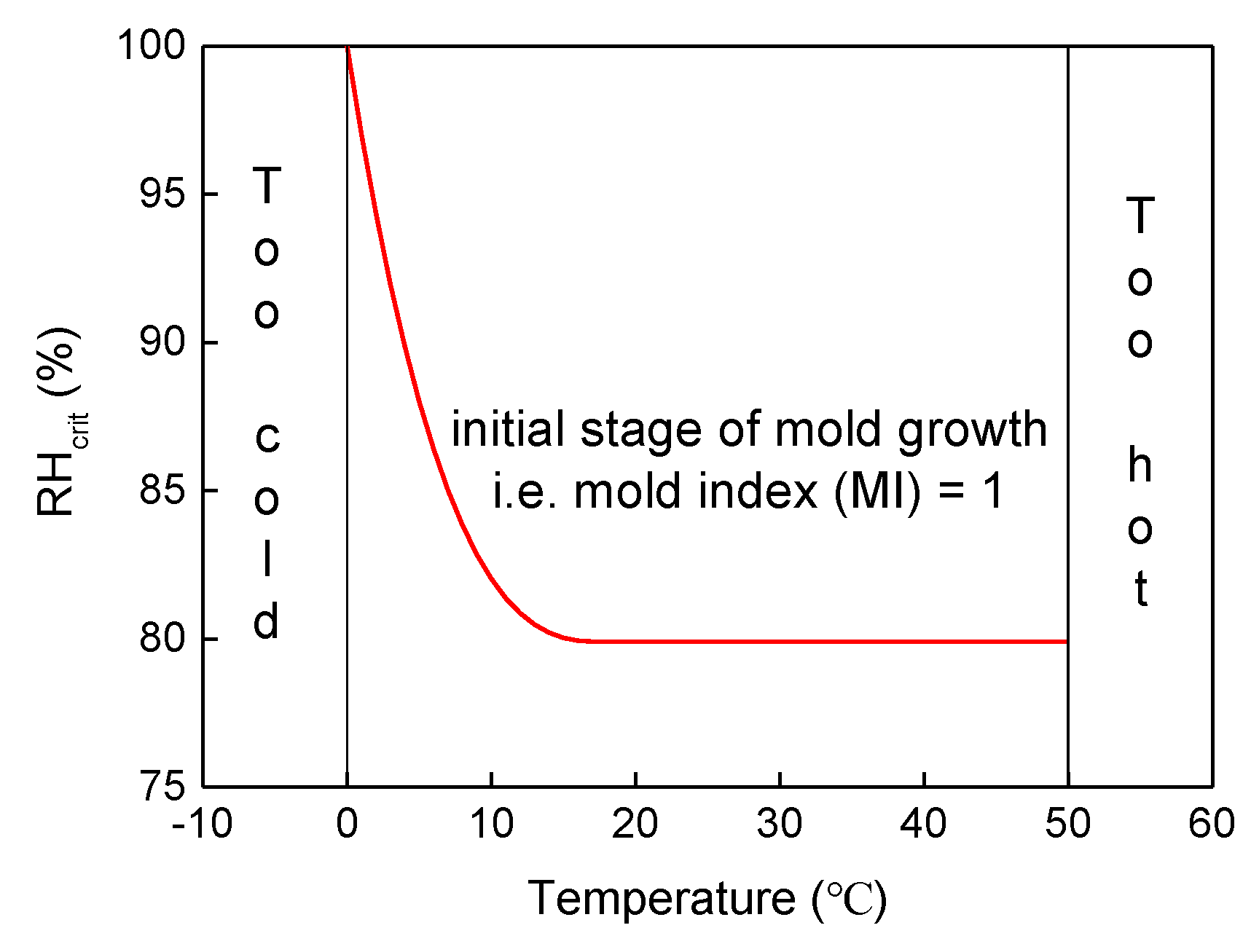
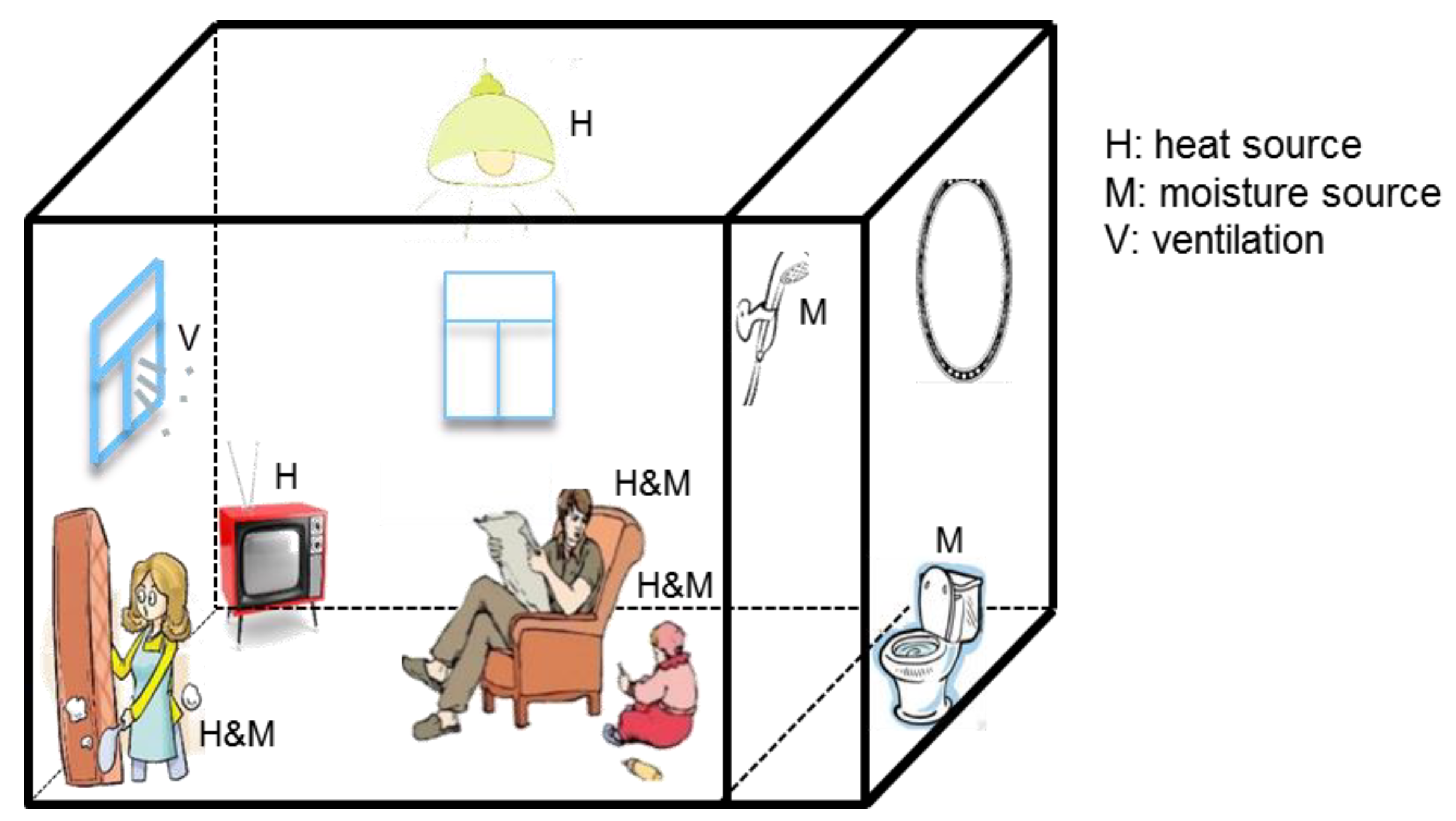
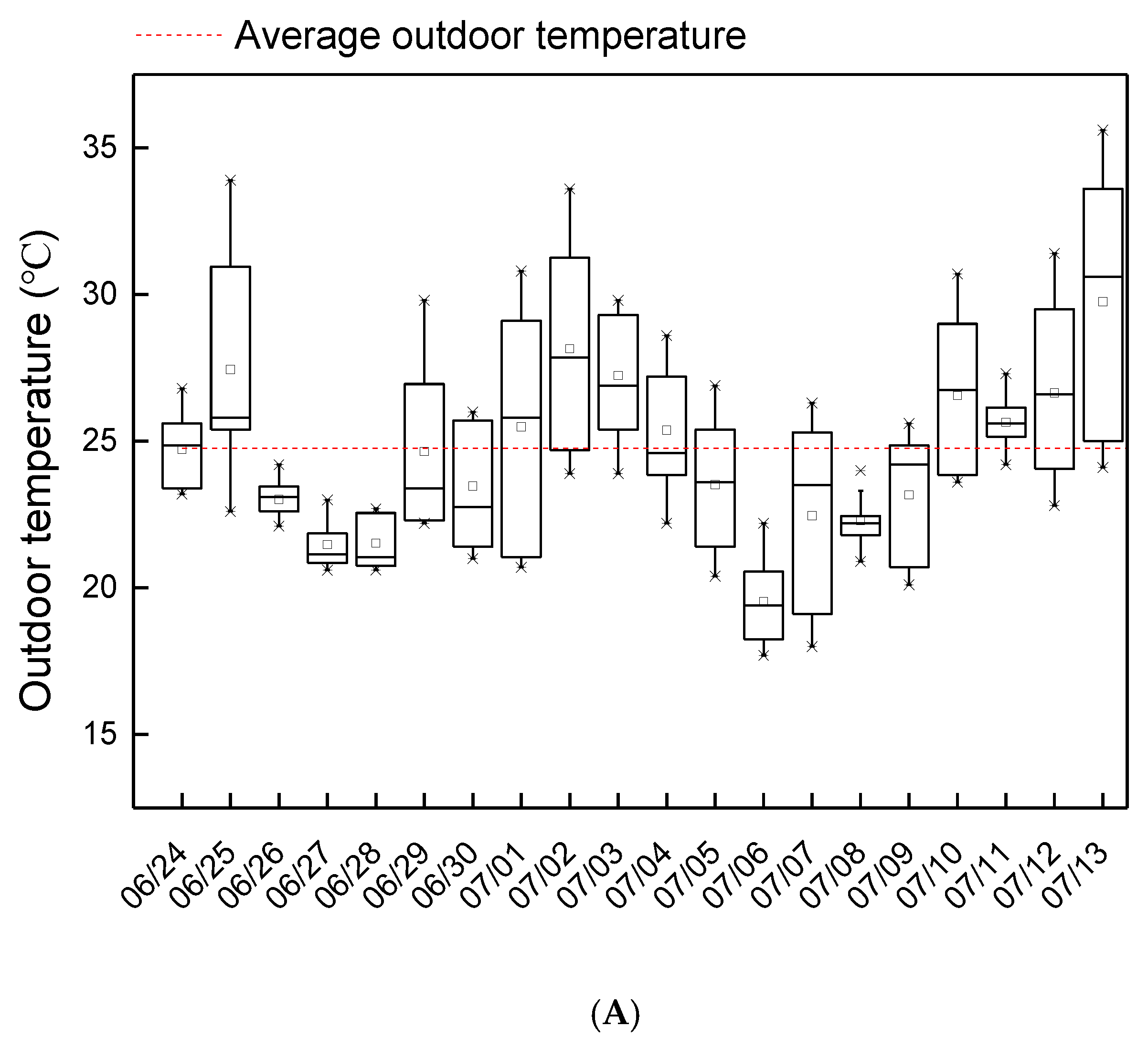
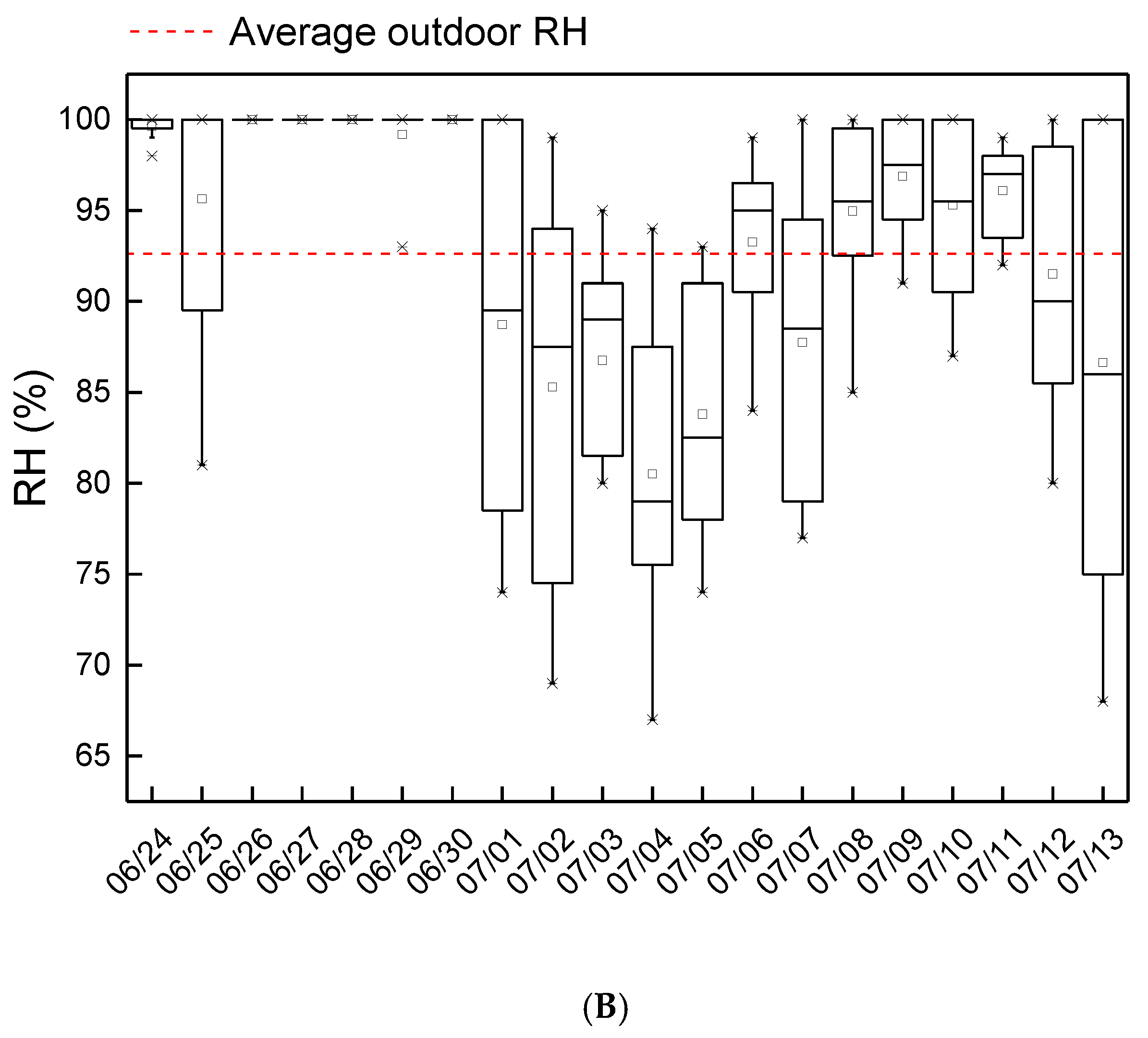
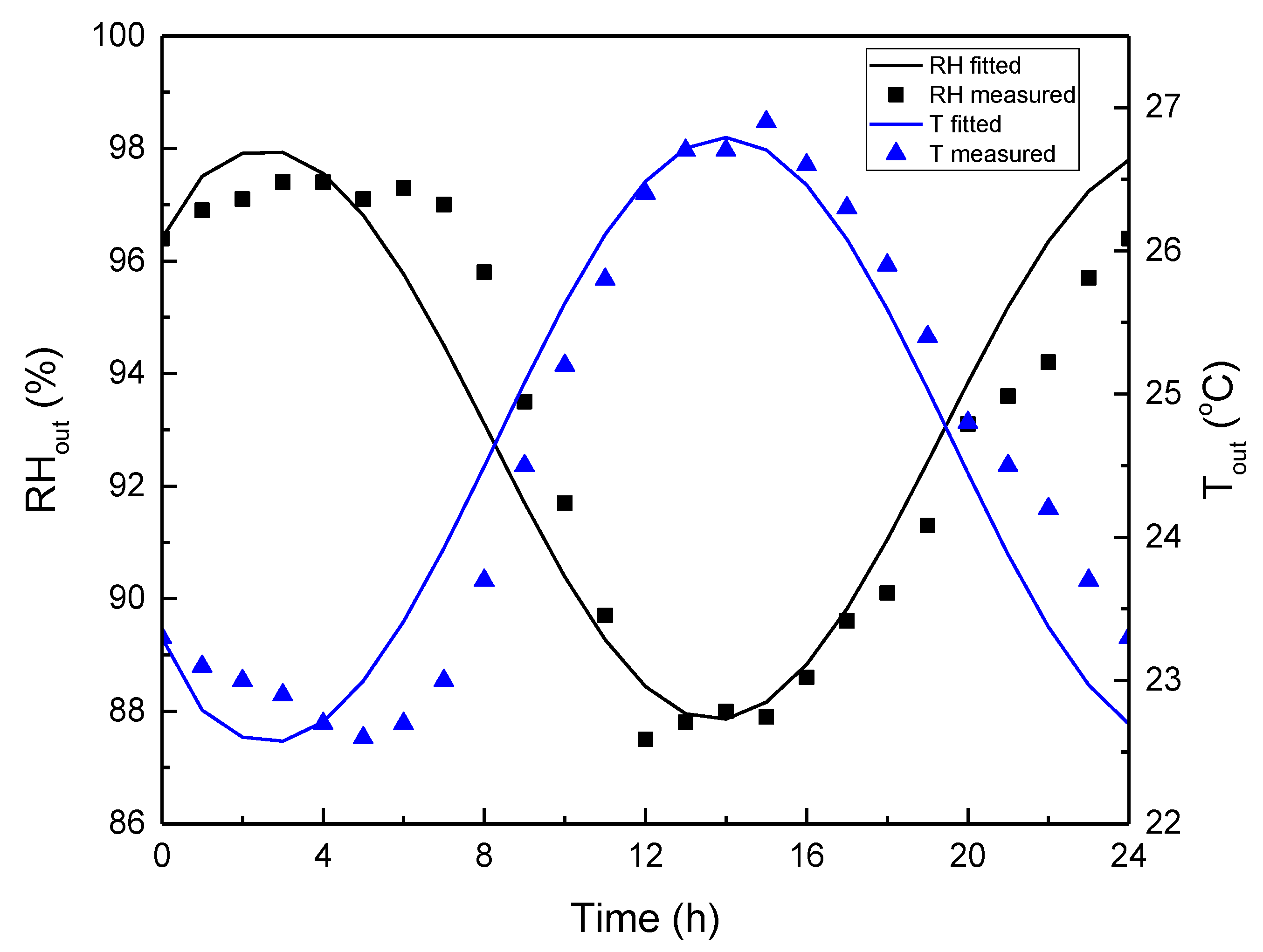
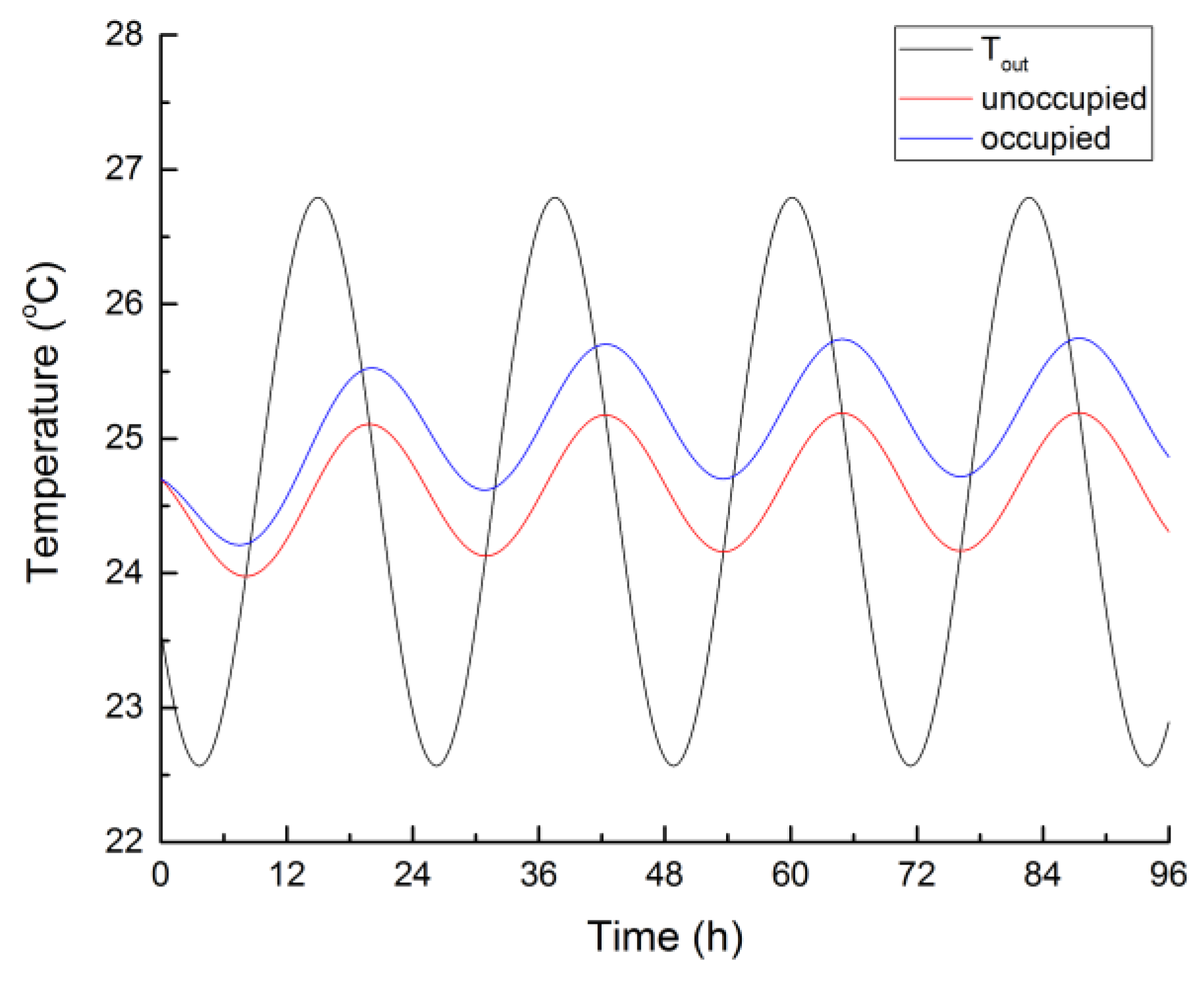
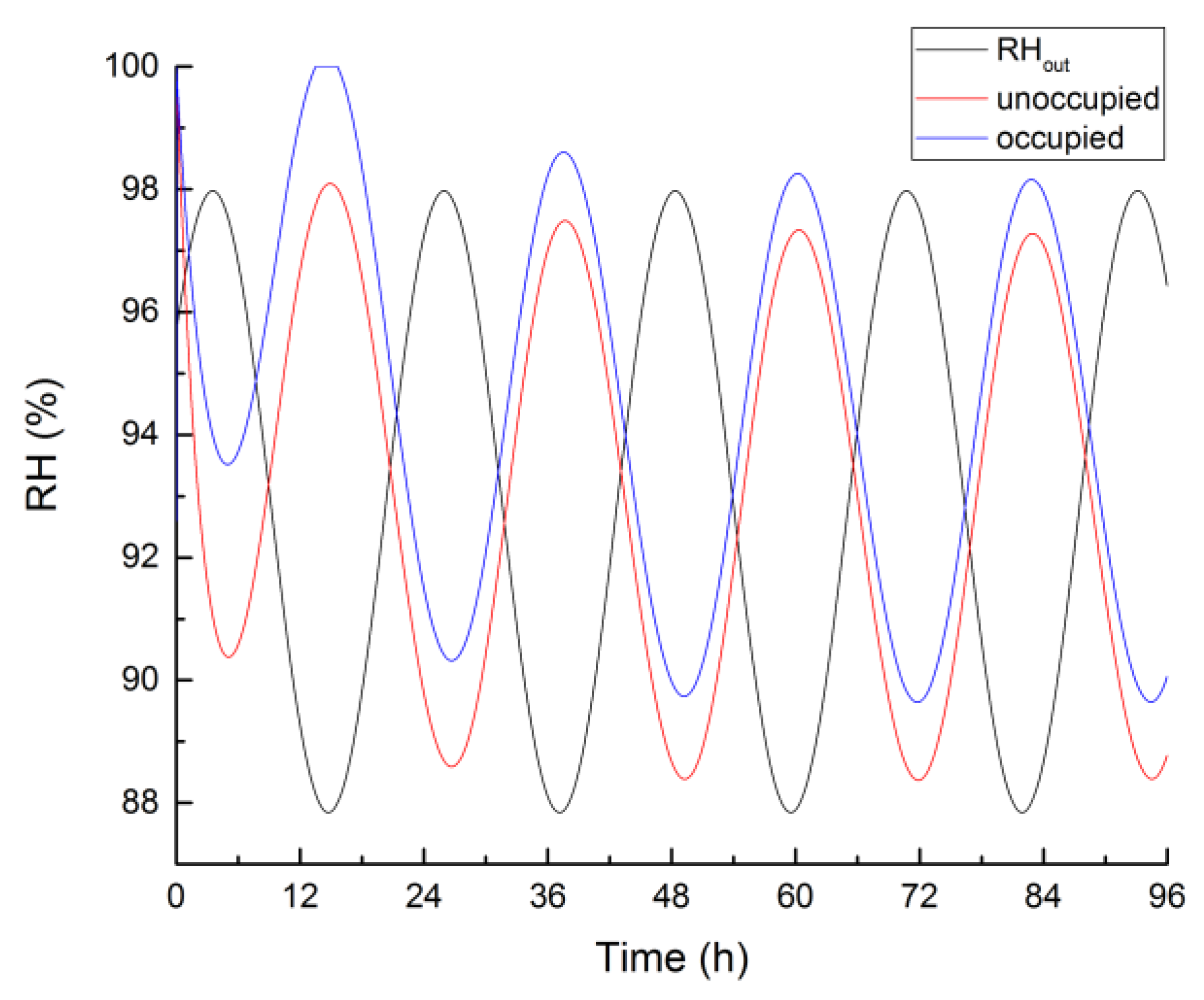
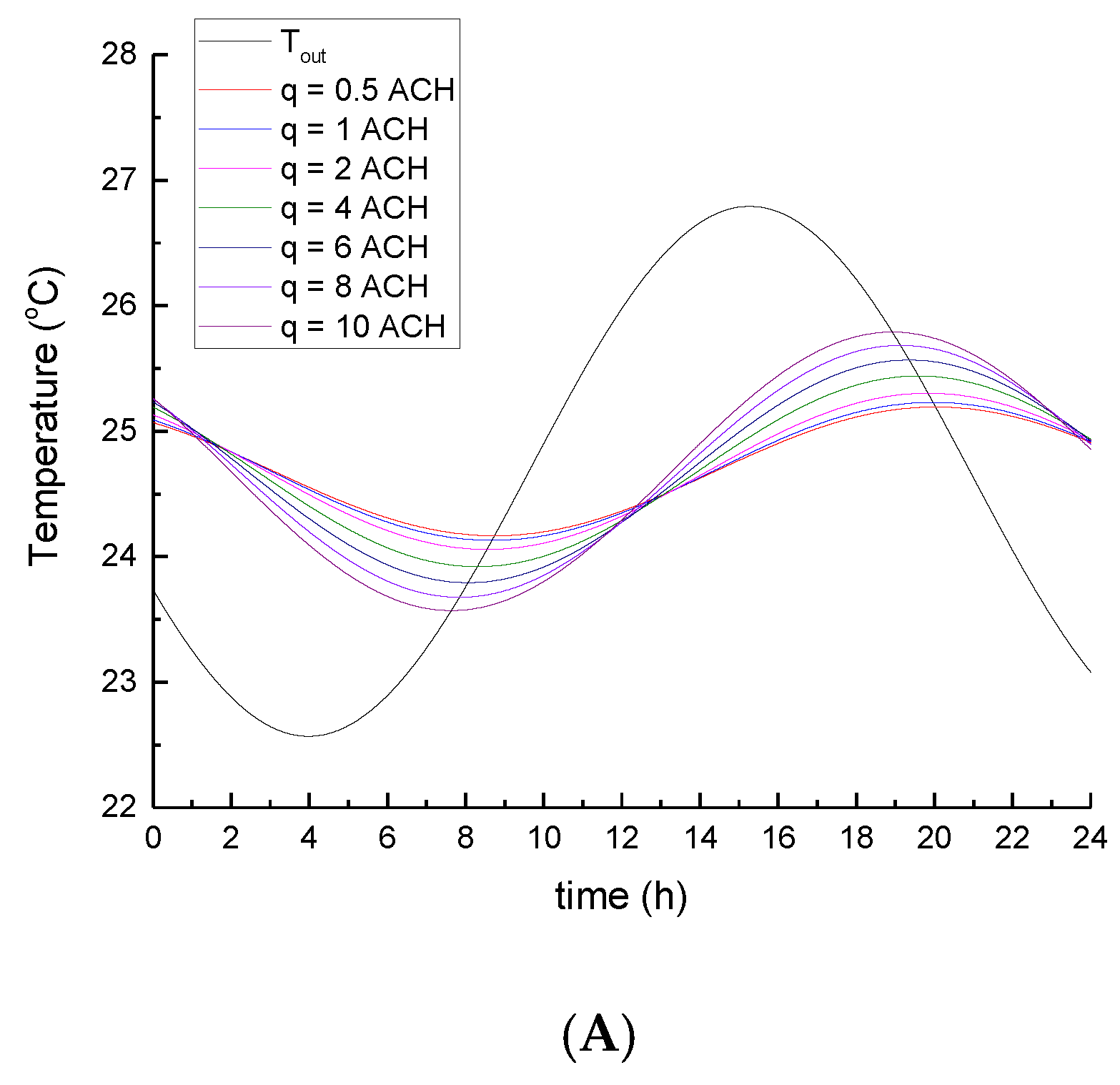
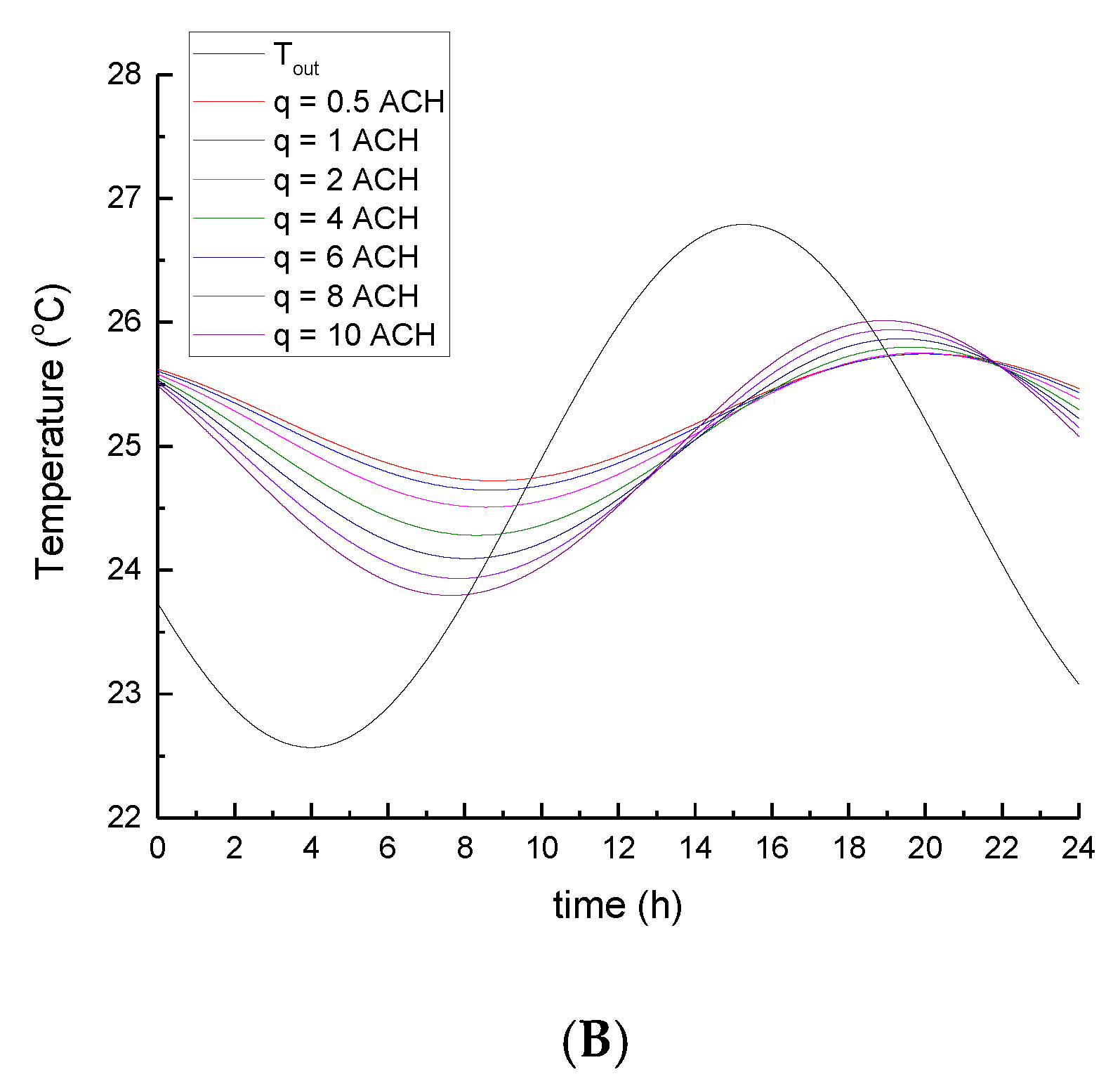
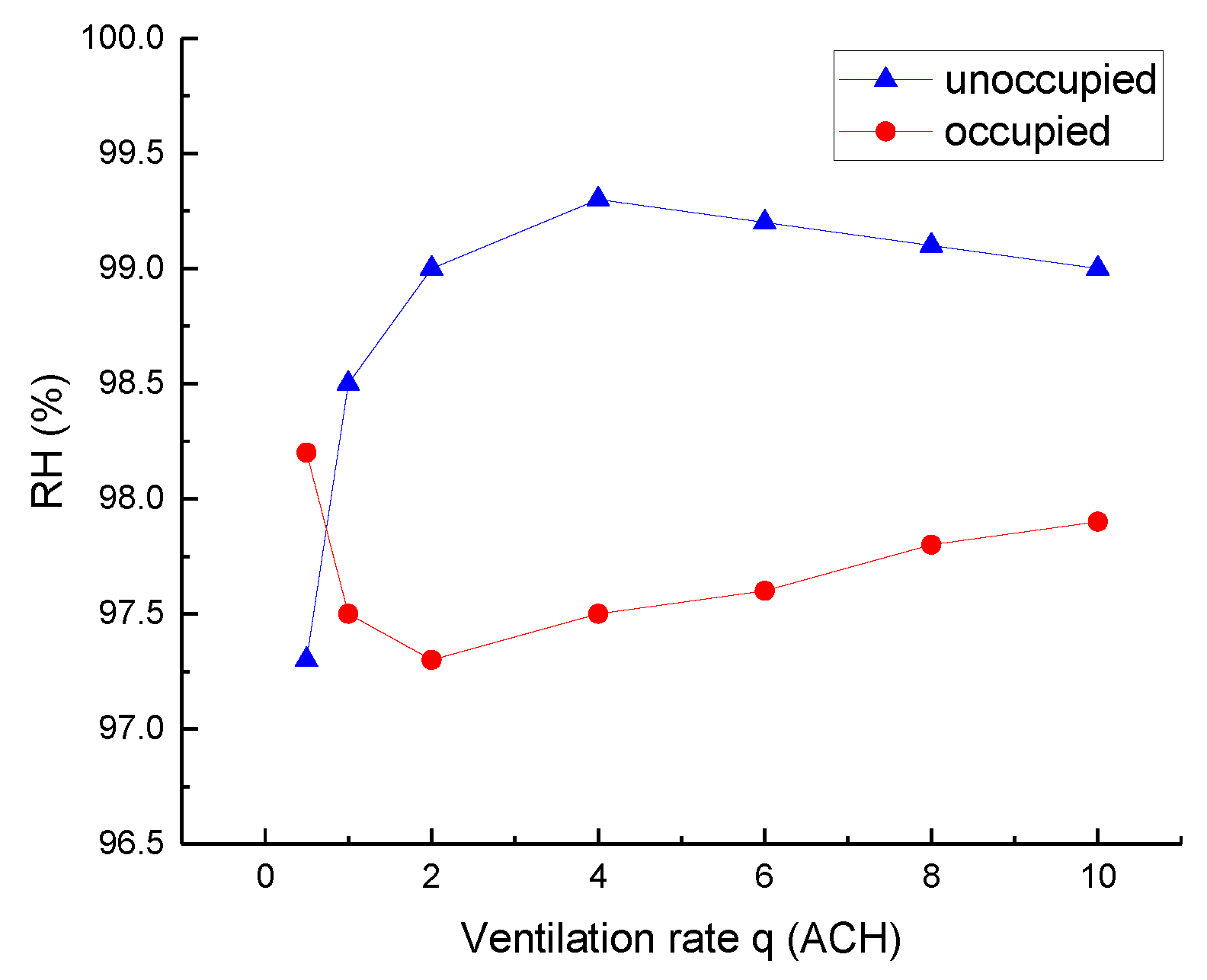
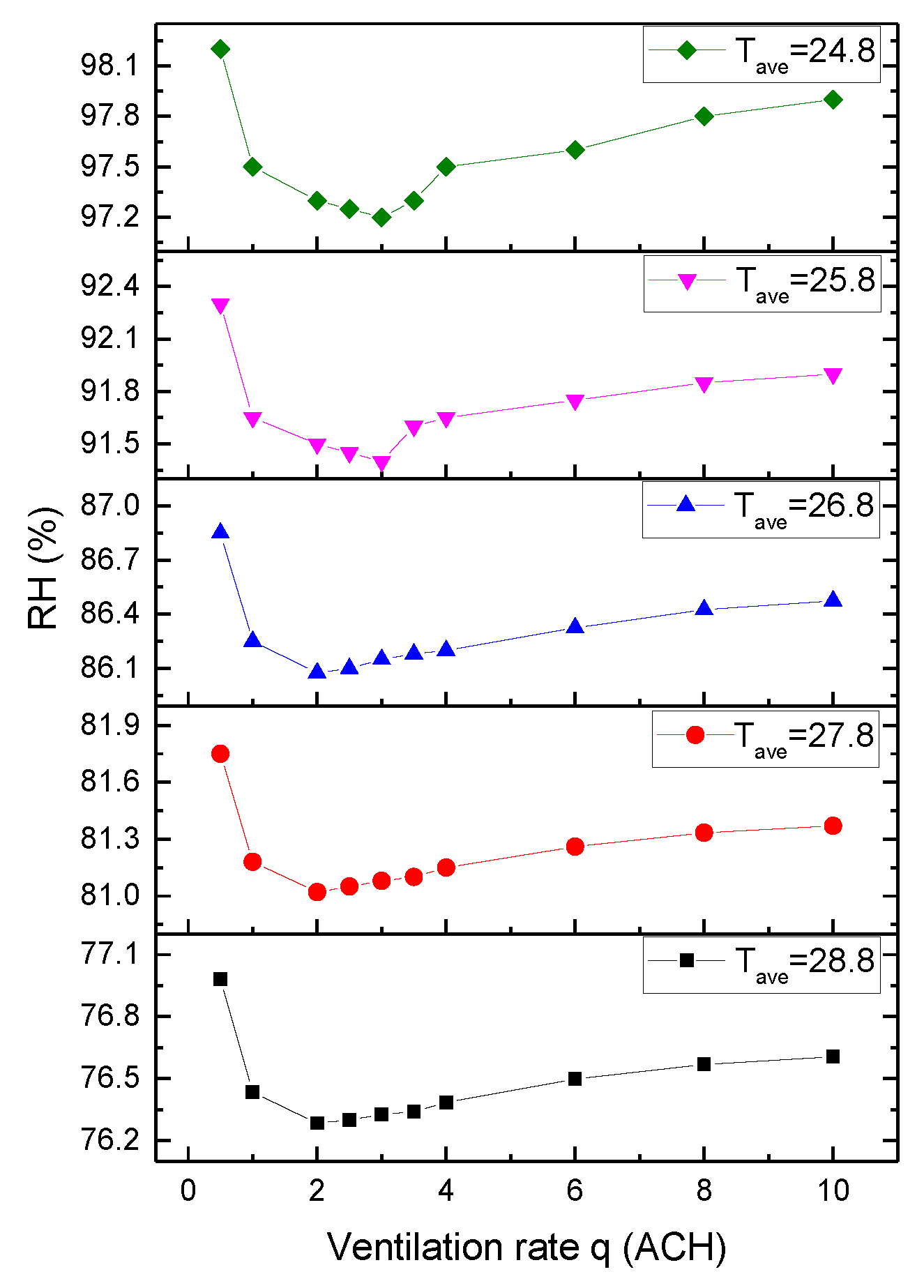
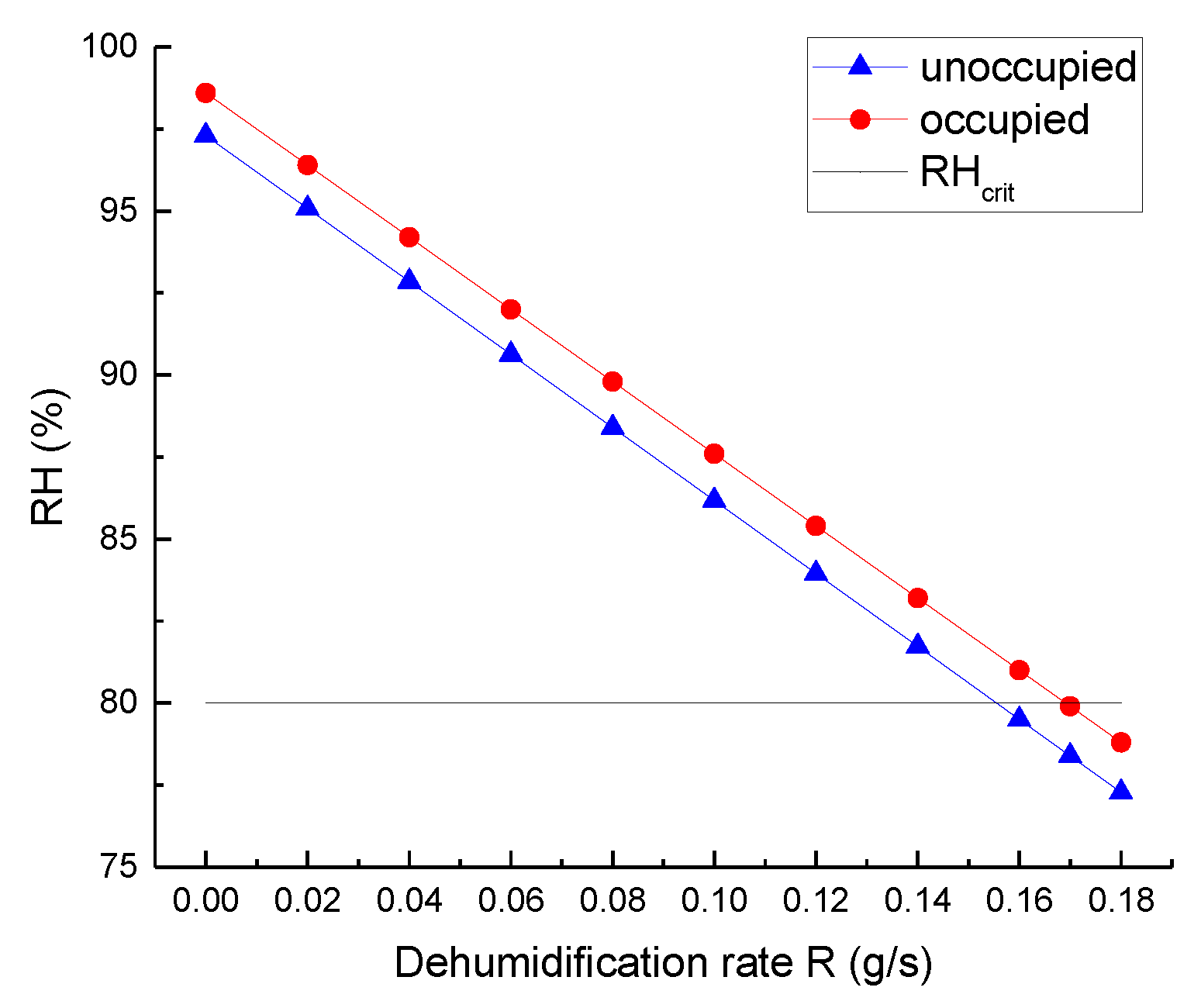
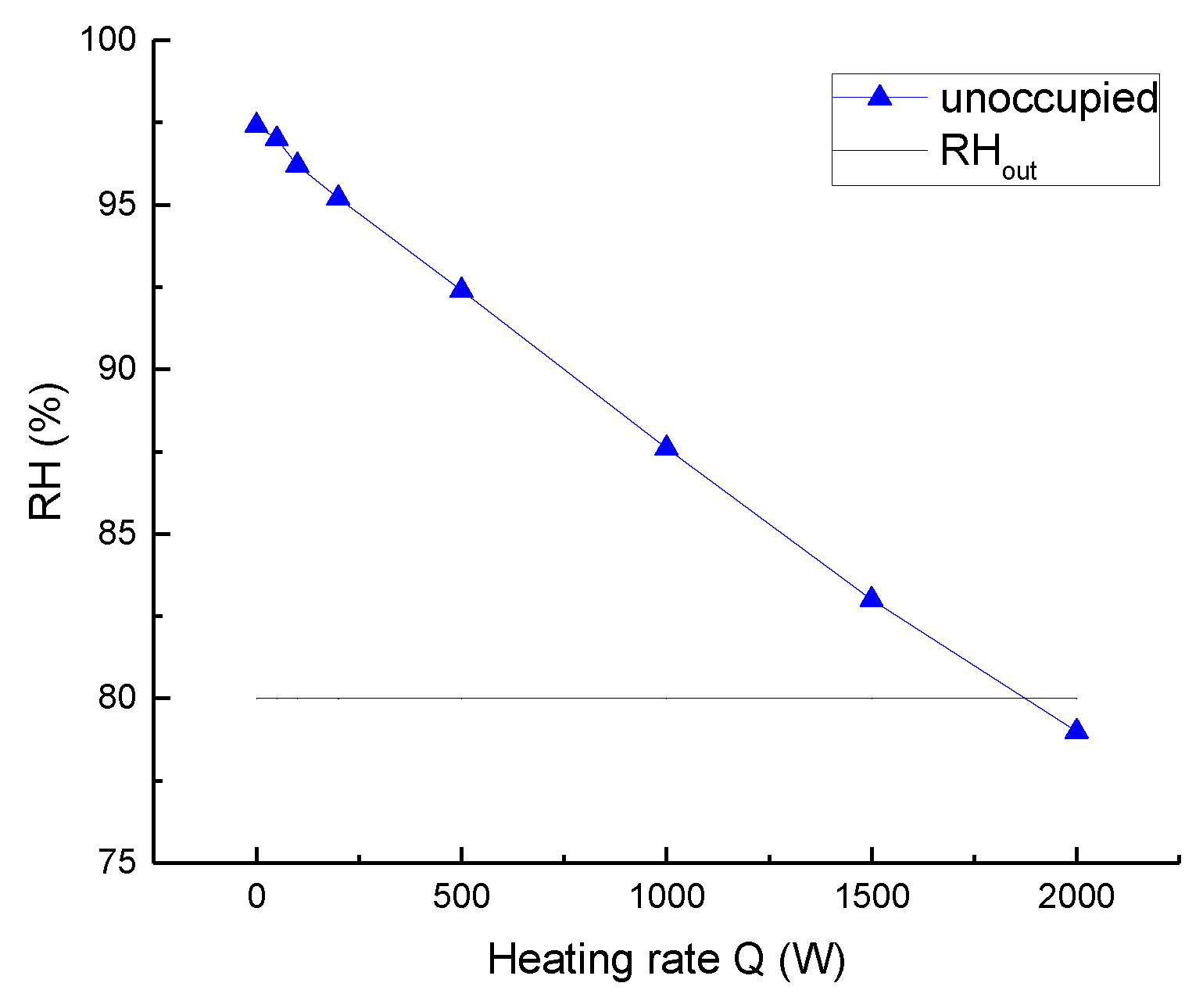
| Items | Density (kg/m3) | Heat Capacity (J/(kg °C)) | Combined Convective Heat Transfer Coefficient (W/(m2 °C)) | Volume (m3) | Area (m2) |
|---|---|---|---|---|---|
| Concrete blocks | 1400 | 1000 | 5 | 21.6 | 108 |
| Air | 1.2 | 1005 | 270 |
© 2019 by the authors. Licensee MDPI, Basel, Switzerland. This article is an open access article distributed under the terms and conditions of the Creative Commons Attribution (CC BY) license (http://creativecommons.org/licenses/by/4.0/).
Share and Cite
Ye, J.; Qian, H.; Zheng, X.; Cao, G. Plum Rain-Season-Oriented Modelling and Intervention of Indoor Humidity with and without Human Occupancy. Atmosphere 2019, 10, 97. https://doi.org/10.3390/atmos10020097
Ye J, Qian H, Zheng X, Cao G. Plum Rain-Season-Oriented Modelling and Intervention of Indoor Humidity with and without Human Occupancy. Atmosphere. 2019; 10(2):97. https://doi.org/10.3390/atmos10020097
Chicago/Turabian StyleYe, Jin, Hua Qian, Xiaohong Zheng, and Guoqing Cao. 2019. "Plum Rain-Season-Oriented Modelling and Intervention of Indoor Humidity with and without Human Occupancy" Atmosphere 10, no. 2: 97. https://doi.org/10.3390/atmos10020097
APA StyleYe, J., Qian, H., Zheng, X., & Cao, G. (2019). Plum Rain-Season-Oriented Modelling and Intervention of Indoor Humidity with and without Human Occupancy. Atmosphere, 10(2), 97. https://doi.org/10.3390/atmos10020097






